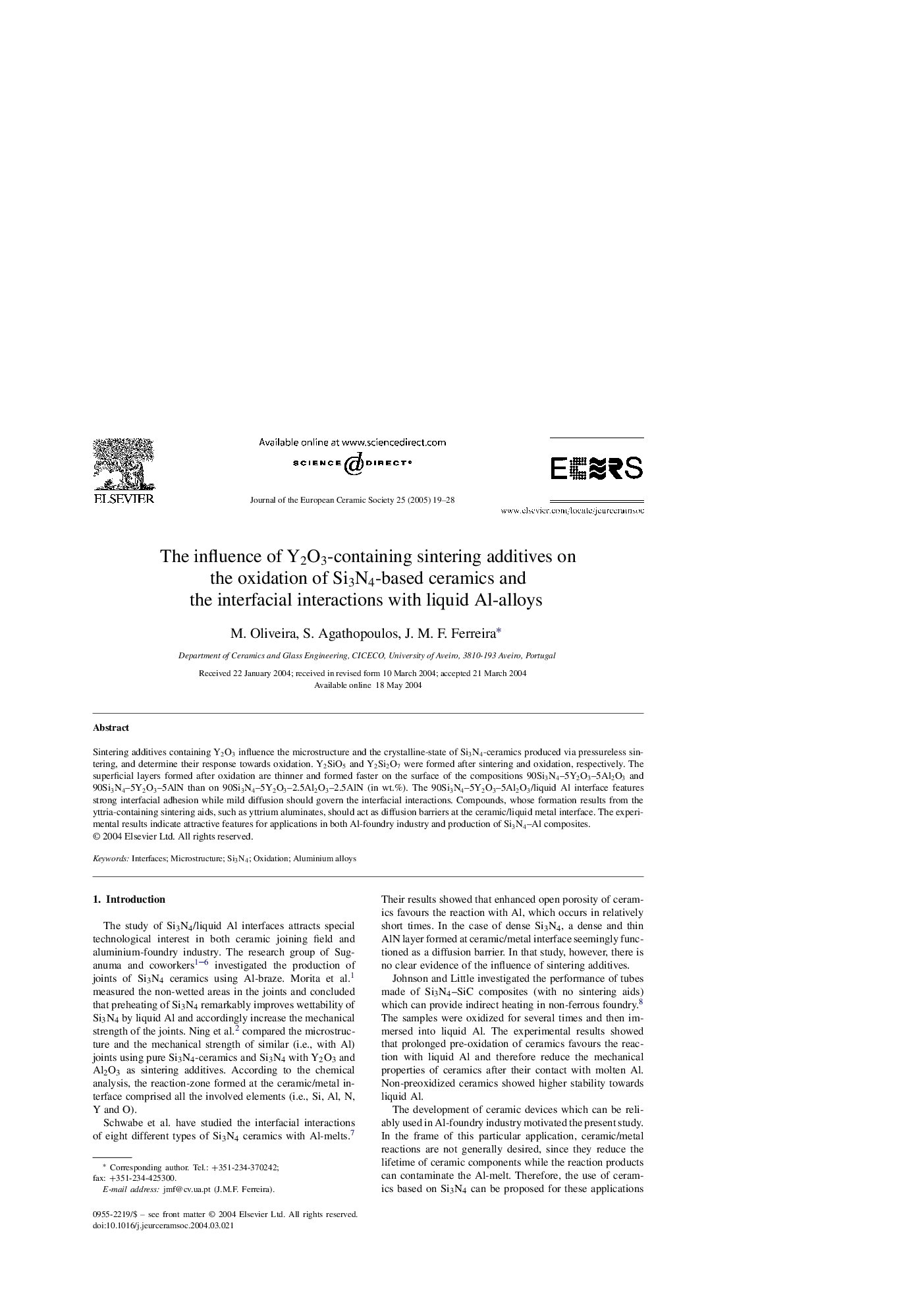| Article ID | Journal | Published Year | Pages | File Type |
|---|---|---|---|---|
| 10629900 | Journal of the European Ceramic Society | 2005 | 10 Pages |
Abstract
Sintering additives containing Y2O3 influence the microstructure and the crystalline-state of Si3N4-ceramics produced via pressureless sintering, and determine their response towards oxidation. Y2SiO5 and Y2Si2O7 were formed after sintering and oxidation, respectively. The superficial layers formed after oxidation are thinner and formed faster on the surface of the compositions 90Si3N4-5Y2O3-5Al2O3 and 90Si3N4-5Y2O3-5AlN than on 90Si3N4-5Y2O3-2.5Al2O3-2.5AlN (in wt.%). The 90Si3N4-5Y2O3-5Al2O3/liquid Al interface features strong interfacial adhesion while mild diffusion should govern the interfacial interactions. Compounds, whose formation results from the yttria-containing sintering aids, such as yttrium aluminates, should act as diffusion barriers at the ceramic/liquid metal interface. The experimental results indicate attractive features for applications in both Al-foundry industry and production of Si3N4-Al composites.
Related Topics
Physical Sciences and Engineering
Materials Science
Ceramics and Composites
Authors
M. Oliveira, S. Agathopoulos, J.M.F. Ferreira,
